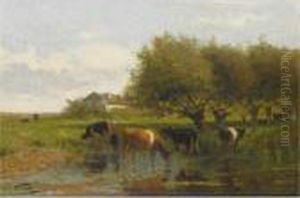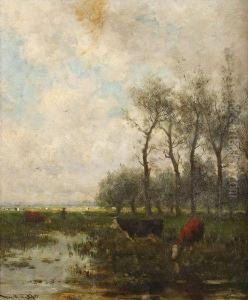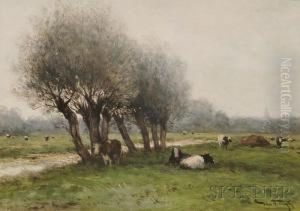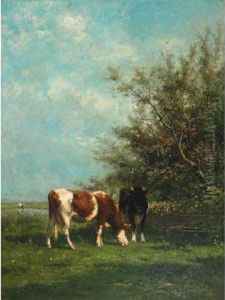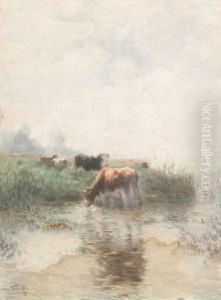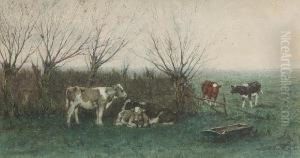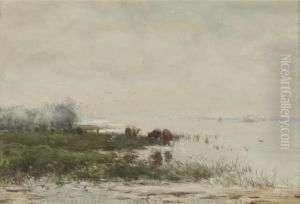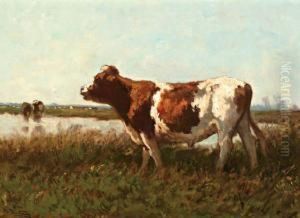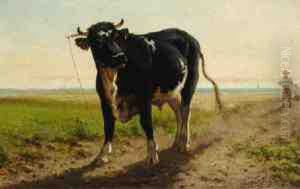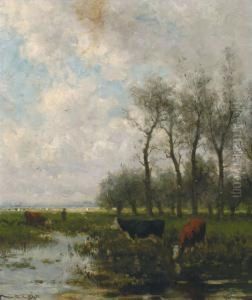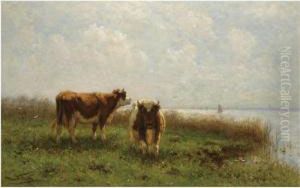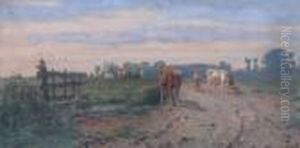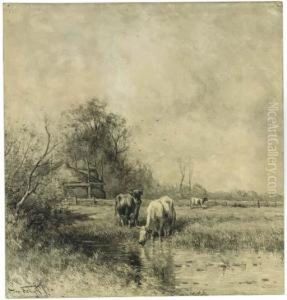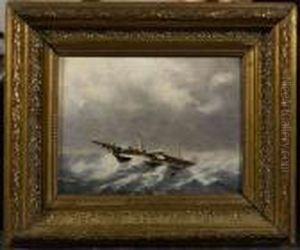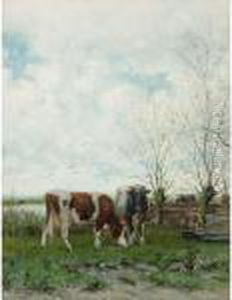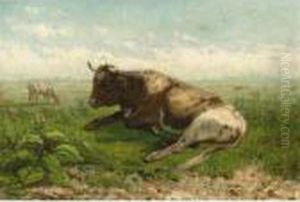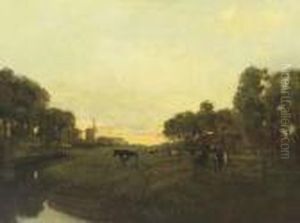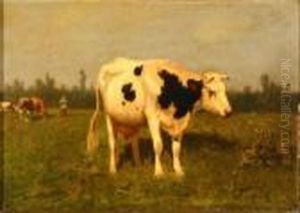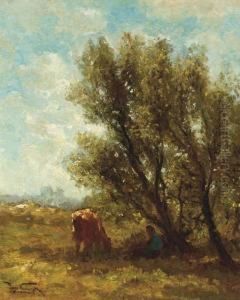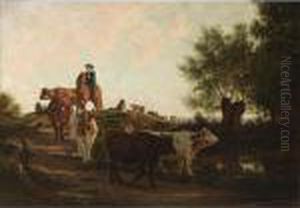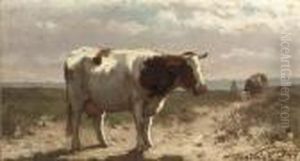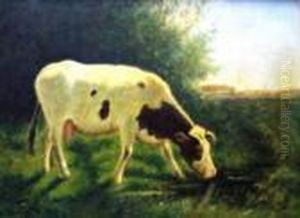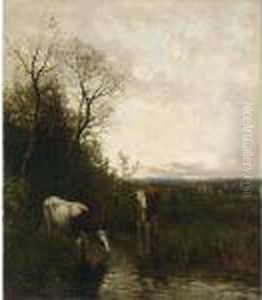Jan Martinus Vrolijk Paintings
Jan Martinus Vrolijk was a Dutch painter born on August 15, 1859, in The Hague, Netherlands. His work mainly focused on genre scenes, landscapes, and animals, capturing the essence of Dutch rural life in the late 19th and early 20th centuries. Vrolijk was influenced by the Hague School, a group of artists who lived and worked in The Hague between 1860 and 1890. Although not as widely recognized as some of his contemporaries, Vrolijk's work was appreciated for its vibrant use of color and light, and his ability to depict the daily life of farmers and their livestock with warmth and sensitivity.
During his lifetime, Vrolijk was part of an artistic movement that was characterized by a transition from the academic style of the early 19th century to a focus on realism and naturalism, which was inspired in part by the French Barbizon School. His paintings often reflected a peaceful and idyllic countryside, which was a romanticized vision of the Netherlands during a time of significant social and economic change.
Vrolijk's education and training in art are not well-documented, but it is known that he worked in the artistic circle of The Hague and was active in exhibiting his works. His paintings were exhibited in various Dutch cities, and he participated in art exhibitions that helped to spread his reputation as a skilled painter of rural life.
Jan Martinus Vrolijk's work is part of several Dutch national collections, and his paintings can be found in museums in The Netherlands, including the Gemeentemuseum Den Haag. Despite not achieving the same level of fame as some of his contemporaries from the Hague School, Vrolijk's contribution to Dutch art continues to be recognized by art historians and collectors.
He passed away on October 27, 1933, in The Hague. Today, Vrolijk's legacy is preserved in the continued appreciation and study of his work, which provides a charming and nostalgic view of the Dutch countryside of his time.
